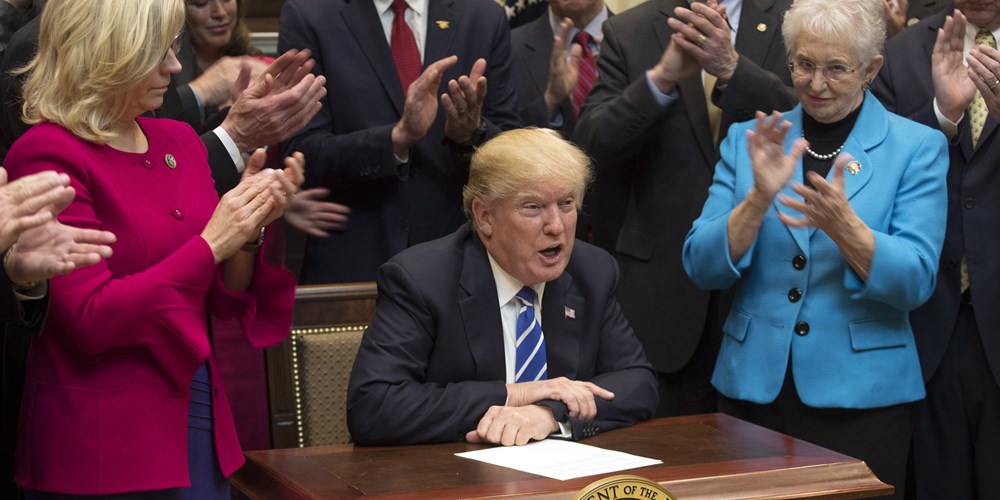Today, April 10, is Equal Pay Day, the date symbolizing how far into the year the average woman in the United States must work to earn what the average man earned in the previous year. Ironically, just days before last year’s Equal Pay Day, President Trump decimated some of the country’s strongest protections for equal pay by revoking President Obama’s 2014 Fair Pay and Safe Workplaces executive order.
One year after rescinding Fair Pay, Donald Trump has yet to do anything that will help women in the workplace by closing the wage gap, despite his special advisor Ivanka Trump’s insistence to the contrary. In fact, in August of last year, the Trump administration struck another blow to equal pay by halting the Equal Employment Opportunity Commission’s equal pay data collection, an initiative requiring large companies to confidentially report what they pay their employees by job category, sex, race, and ethnicity.
Where the EEOC initiative was useful in understanding the scope of the unequal pay problem, the Fair Pay and Safe Workplaces order put some teeth behind it, so it’s no surprise it was the first to go. Fair Pay was enacted after a 2010 Government Accountability Office investigation revealed that companies that repeatedly violated basic labor and civil rights laws were receiving millions of dollars in federal contracts. To keep taxpayer dollars from flowing to these law-flouting employers, the order ensured that before receiving new contracts, businesses would have to demonstrate compliance with workplace laws, including standards for health, safety, wages, and civil rights.
Because one in five American workers are employed by companies that do business with the federal government, Fair Pay and Safe Workplaces aimed to have a far-reaching impact on Americans’ rights at work. Two rules sought to lift up the rights of women workers in particular: first, a paycheck transparency requirement, and second, a ban on forced arbitration clauses for sexual harassment, sexual assault, or discrimination claims.
The paycheck transparency mandate was a crucial piece of Fair Pay and Safe Workplaces because it required employers to disclose earnings, pay scales, salaries, and other details that are normally unavailable to employees. One of the biggest obstacles to bringing pay disparity lawsuits is a lack of information—oftentimes, women employees don’t even know they’re being discriminated against.
The first bill ever signed into law by President Obama, the Lilly Ledbetter Fair Pay Act of 2009, sought to address one piece of this problem by extending the statute of limitations for filing an equal pay lawsuit. In Ledbetter v. Goodyear Tire & Rubber Co. in 2007, the Supreme Court held that the 180-day statute of limitations for presenting an equal pay lawsuit begins on the date that the employer makes the initial discriminatory wage decision.
Republicans opposed and defeated a version of Ledbetter Act introduced in the immediate wake of that decision to extend the statute of limitations to begin at the date of the most recent paycheck. President Trump continued his party’s opposition to equal pay for women when he rescinded the Fair Pay order, which was one of the only ways to ensure companies were paying women workers equally to their male colleagues.
In addition, the Fair Pay order’s ban on forced arbitration clauses was essential to protecting not just women workers, but all employees’ rights at work. Forced arbitration clauses, which are increasingly included in employment contracts, are used to keep harassment and discrimination claims against companies out of the courts and off the public record.
It’s no surprise that the Trump administration would attack workers’ constitutional right to their day in court. After all, the Trump Organization has repeatedly violated labor and civil rights laws with impunity while using forced arbitration agreements to prevent its own workers from suing. It’s also worth noting that the Trump Organization is currently profiting from contracts with the federal government.
In November 2017, the National Women’s Law Center, Labor Council for Latin American Advancement, and Democracy Forward sued the Trump administration to restore the EEOC rule. They argued that the Trump Administration’s decision to indefinitely “review and stay” the rule without comment periods or inter-agency discussion was an unlawful action to hinder efforts to close the wage gap for women and other historically underpaid groups. In response, the Trump administration filed a motion to dismiss, which remains pending.
In the Trump era, our tax dollars are once again flowing through federal contracts to the pockets of companies that openly discriminate against us, and we are being forced to keep them in business—at our own expense. In the meantime, the fight for equal pay continues.

